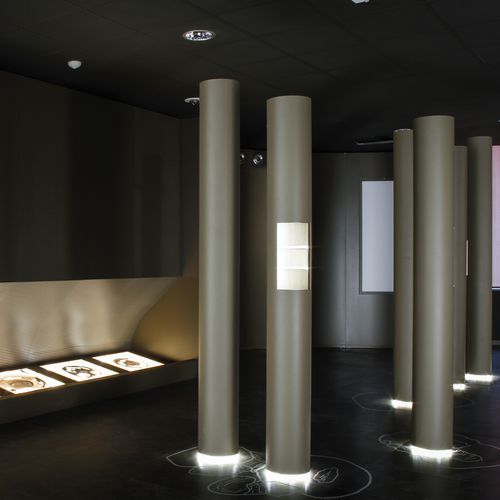

- Company
- Products
- Catalogs
- News & Trends
- Exhibitions
Indoor tile PL01 INVISIBLE FOR MUSEO AREA MEGALITICAfloormetalrectangular
Add to favorites
Compare this product
Characteristics
- Location
- indoor
- Installation
- floor
- Material
- metal
- Shape and dimensions
- rectangular, square, large-format
- Motif
- plain, nature pattern, customizable
- Finish
- polished, matte, smooth, flamed, waxed, rounded, oxidized, natural finish, laminated
- Appearance
- metal look
- Technical characteristics
- non-slip, high-performance, clip-on, beam, high-resistance
- Ecological characteristics
- 100% recyclable, low-VOC
- Market
- commercial, for public spaces, tertiary
- Other characteristics
- step, Italian, dyed in the mass, custom, thin
- Thickness
7 mm
(0.3 in)
Description
Located on the western outskirts of Aosta, the archaeological area was discovered in June 1969.
On a surface that covers about one hectare there is one of the most interesting European archaeological sites: suggestively scanned, in fact, there are significant testimonies of almost five millennia of history, from the final moments of the Neolithic period up to the present day. In the '69 began the excavations, that lasted until the 90s. Further indepth analysis took place in 2001, followed by interventions from 2007 until today.
As a consequence of the fitting out project and the direction of the works carried out by the Copaco Srl studio and by the Arch. Massimo Venegoni and Renato Perinetti, the museum complex, commissioned by the Autonomous Region of Valle d'Aosta, Department of Education and Culture, Superintendence for the Heritage and the Cultural Activities, was built and inaugurated on 24 June 2016.
The exhibition route of the megalithic area begins with walkways that, from the entrance of the museum, lead the visitor to the level of the actual archaeological site. Along this itinerary a temporal descent from today to prehistory is made, with images referring to human history.
The cultural journey is divided into six sections. These, distinguished by the background colors of the walls, that vary almost imperceptibly, have innovative PL01 Invisible system by Planium on the floor, laid completely dry over a surface of over 1,000 square meters, with a Calamine finish, in 600x600 mm slabs.
Calamine, with its dark and deep tones, completes and enhances the exhibition scenario.
Photo: ©FrancescaAlti. It granted free of charge by the Autonomous Region of Valle d'Aosta
VIDEO
Catalogs
No catalogs are available for this product.
See all of Planium‘s catalogs*Prices are pre-tax. They exclude delivery charges and customs duties and do not include additional charges for installation or activation options. Prices are indicative only and may vary by country, with changes to the cost of raw materials and exchange rates.




